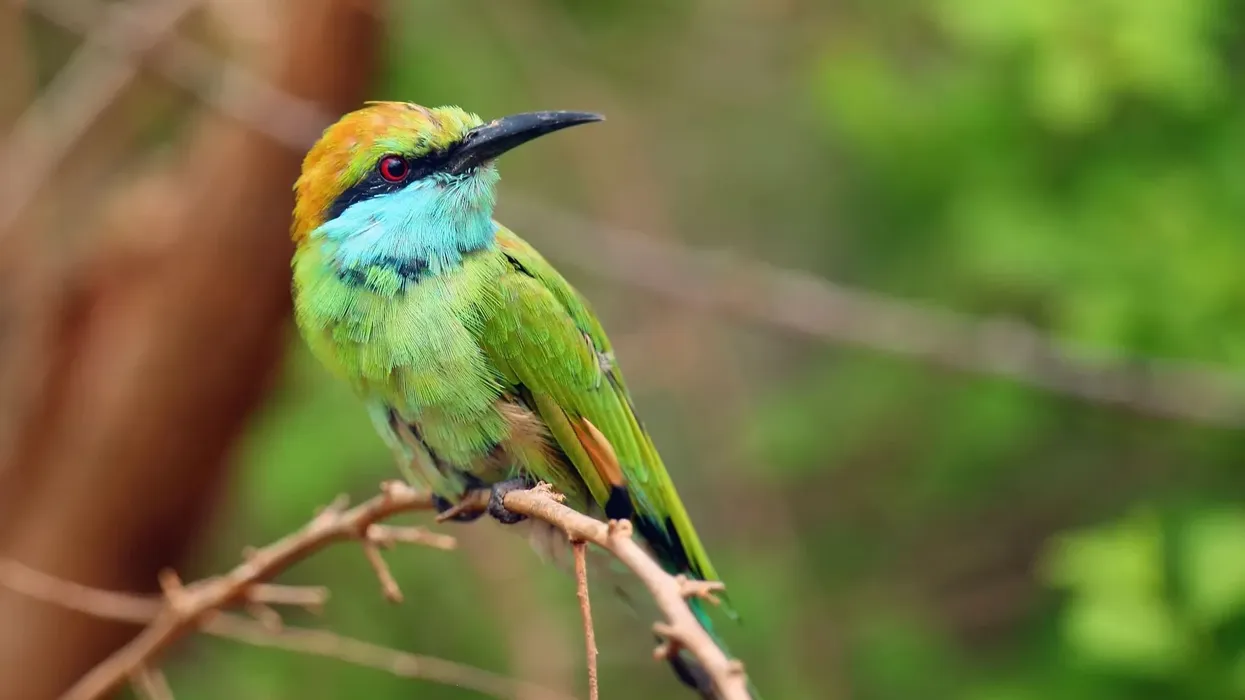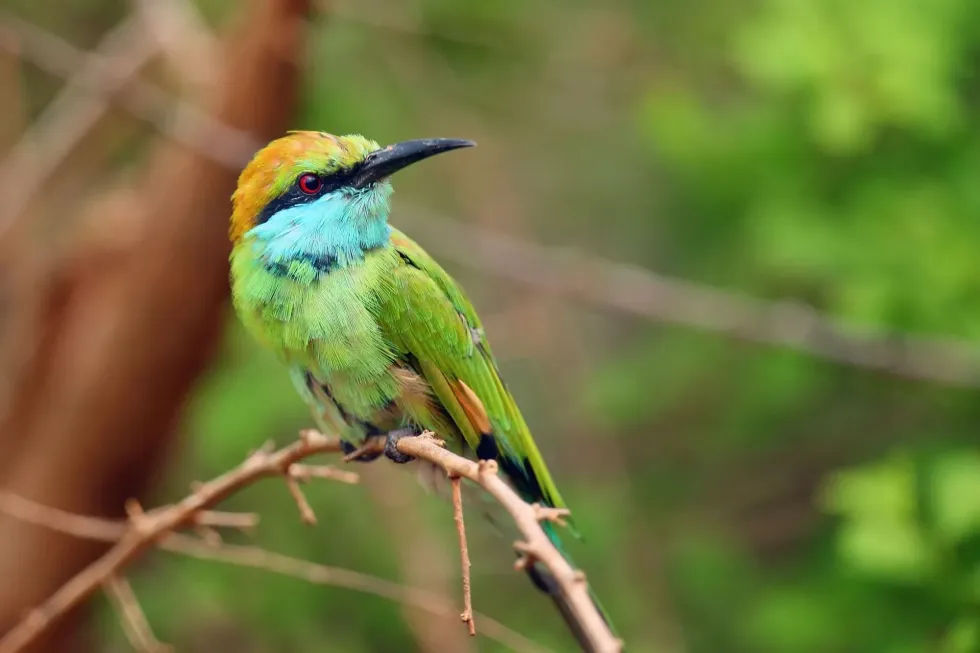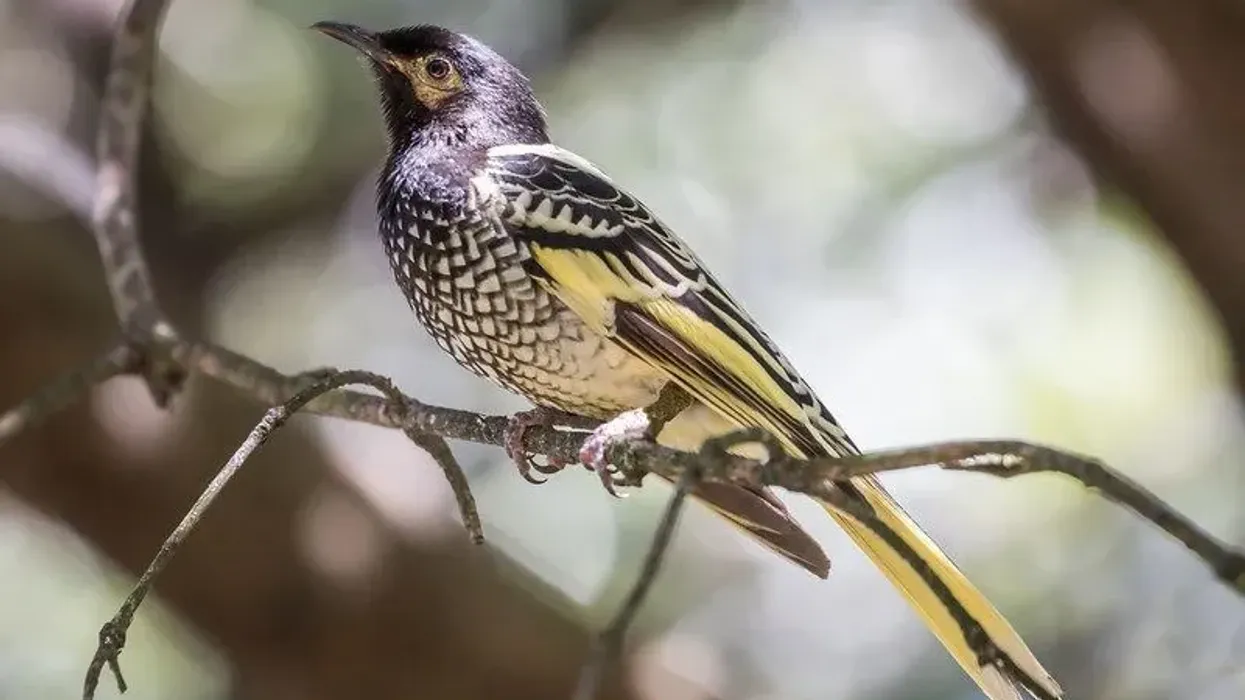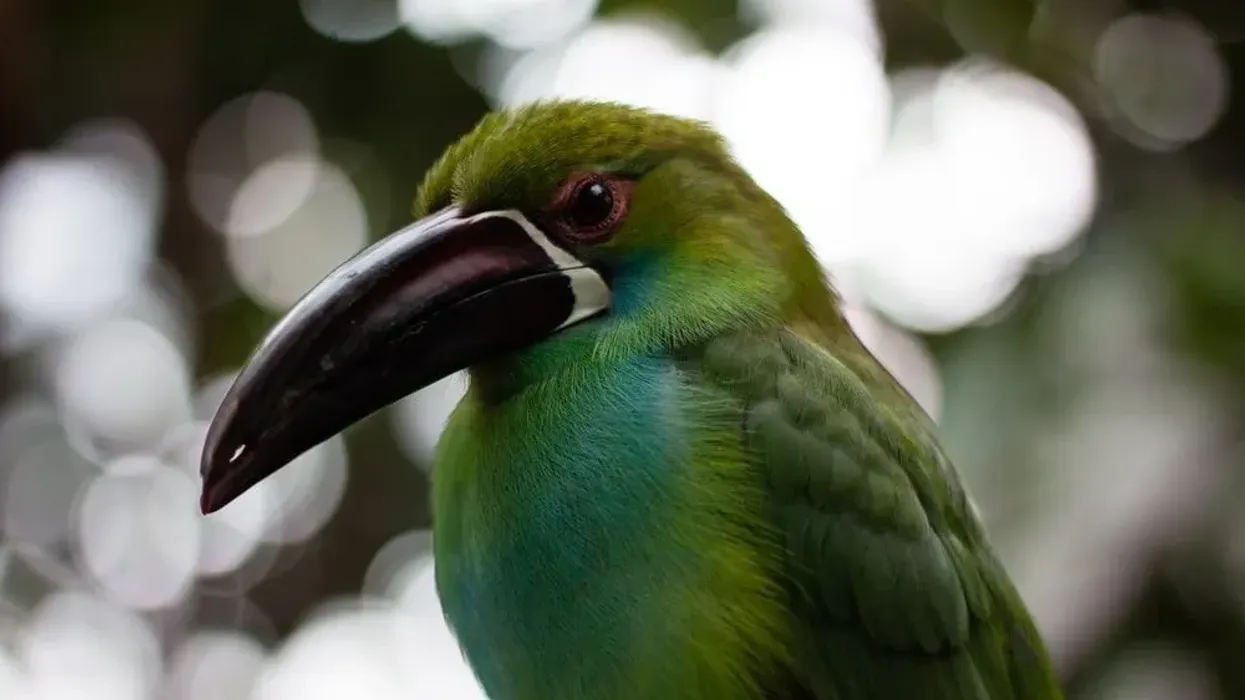If the diversity of the avian world intrigues you, then you'll surely be fascinated by the Asian green bee-eater or better known as the little green bee-eater, or simply the green bee-eater!
The green bee-eater (Merops orientalis) is a small, passerine bird species of the bee-eater family Meropidae. With unmistakable bright green plumage and a characteristic bluish-green throat, this bee-eater species has a wide distribution across Asia.
As evident from the name, the Asian green-bee eater is an insectivore. These birds primarily prey on flying insects including bees, butterflies, wasps, dragonflies, beetles, and other insects of the order Hymenoptera.
While the habitat and breeding ground of its cousins in Arabia and Africa are restricted to arid regions, the Asian green bee-eaters' population occupies diverse habitats. From plains, fields, woodlands, and farmlands to the Himalayas and even dense urban settlements, these green-bee eaters are pretty ubiquitous throughout the continent of Asia.
Green bee-eaters are migratory birds, particularly in the Indian subcontinent. There, the migratory pattern of the bird varies with the seasons.
These birds usually move away from the northern regions during winters and withdraw from wet areas during the monsoon seasons. Another unique aspect of this insect-eating bird species is that, unlike most other birds that nest in trees, green bee-eaters nest in burrows in gently sloping or flat land.
The typical green bee-eater call is a series of musical trills that are rather pleasant to the ear.
There is a lot more to the interesting Asian green-bee eater species (Merops orientalis). Read on to know more about this graceful little green bee-eater.
You might also be interested in reading about other species of bee-eaters such as the little bee-eater and the carmine bee-eater.
Green Bee-Eater Interesting Facts
What type of animal is a green bee-eater?
The green bee-eater, or the little green bee-eater, (Merops orientalis) is a bird of the bee-eater family Meropidae.
What class of animal does a green bee-eater belong to?
The green bee-eater (Merops orientalis) belongs to the class of Aves.
How many green bee-eaters are there in the world?
The exact population size of green bee-eaters (Merops orientalis) is not available. However, birds of this species have quite a widespread distribution throughout Asia.
Where does a green bee-eater live?
Green bee-eaters (Merops orientalis) have a diverse habitat range. These birds may be found in semi-desert areas with bare sand or soil, bushlands, woodlands with grassy undercover, thickets, wadis, date-palm groves, thorn hedges, plantations, riversides, lakesides, farmlands, dunes, and spacious gardens.
What is a green bee-eater's habitat?
Green bee-eaters (Merops orientalis) have an extensive distribution range throughout the continent of Asia. Populations of these greenish-blue throated birds span from Vietnam and the Indian subcontinent in the east to the coasts of southern Iran in the west.
These birds are residents of south Asian lowlands but exhibit some seasonal migration, moving to warmer areas during the winters and preferring drier regions during the monsoon season. During summer, these birds have been reported in some parts of Pakistan.
These green bee-eaters nest in holes and burrows dug in gently sloping or flat ground, often on the banks of rivers. In India, the nests have also been seen in the mud banks of arid scrublands.
A green bee-eater's nest typically has a long tunnel running from the entrance that ends in a cavity where the birds lay eggs. These birds usually perch on the top branches of tall trees, stalks of grass, shrubs, or even electricity poles and wires that make it easy to catch insect prey.
Who do green bee-eaters live with?
Green-bee eaters are a gregarious species that are often seen in small groups or roosting communally in large numbers. Communal dust or sand-bathing is also a common sight among green bee-eaters. Despite being solitary nesters, breeding pairs may be joined by helper birds for raising the young.
How long does a green bee-eater live?
No information is available regarding the lifespan of green bee-eaters.
How do they reproduce?
Throughout their distribution range, the breeding season of green bee-eaters extends from March to June. Egg-laying may occasionally take place in July and August as well. Both male and female birds of breeding pairs participate in digging the nest burrow during the breeding season.
The nests have a long, tunnel-like entrance that ends in a chamber where eggs are laid. The clutch size differs with the availability of insect prey and rainfall.
On average, a female bird lays a clutch of about four to eight glossy white and spherical eggs. The incubation period lasts for around 14-16 days. While both parents are known to incubate the eggs, the female contributes more than the male.
What is their conservation status?
According to the International Union for Conservation of Nature (IUCN) Red List of Threatened Species, green bee-eaters (Merops orientalis) is a species of Least Concern with an increasing population trend.
Green Bee-Eater Fun Facts
What do green bee-eaters look like?
The green bee-eater is a small bird with bright green plumage, a greenish-blue throat, and a long tail. A thin black band around the neck and a thicker one through the eyes are quite prominent.
The crown and hindneck are golden-green with streaks of blue on the cheeks. The tail streamers are long with shiny gray undersides. The iris is crimson red, and the black bill is long with a pointed end.
The male and female birds look similar, except the females are comparatively dull-throated with a narrower band around the neck. The juvenile birds are paler with a pale green breast, almost white belly, yellow or yellowish-green throat, and no black band around the neck.
How cute are they?
No doubt, the small size and colorful plumage of green bee-eaters make them look extremely cute and graceful.
How do they communicate?
The typical call of a green bee-eater is a long and repetitive whistle 'trrrr...trrrr...trrrr' that sounds like a nasal trill. The call is mostly heard when these birds are in flight and hunting for flying insects. Alarm calls may be a staccato 'ti-ti-ti-ti' or 'ti-ic'. Loud calls are also common when the birds roost communally.
How big is a green bee-eater?
The size of an adult green bee-eater can range between 6.3-7.08 in (16-18 cm). The species is comparable in size with the common house sparrow.
How fast can a green bee-eater move?
The green bee-eater's flight speed estimate is not available. However, given that these bee-eaters are adept at catching flying insects, it can be said that green bee-eaters have excellent flight capabilities. The long and pointed wings help these birds cut through the air and make swift darts while chasing the zig-zag flight movements of flying insects.
How much does a green bee-eater weigh?
The weight of a green bee-eater can range between 0.6-0.95 oz (17-27 g).
What are the male and female names of the species?
Male and female bee-eaters do not have any distinct names.
What would you call a baby green bee-eater?
A baby green bee-eater us called a chick or simply a juvenile.
What do they eat?
Green bee-eaters are insectivores, meaning they consume a diet consisting of insects. These birds mostly eat insects belonging to the order Hymenoptera.
Their diet primarily includes bees but may comprise any other flying insect such as crickets, butterflies, fruitflies, dragonflies, moths, bugs, termites, beetles, wasps, and even caterpillars and spiders. This bird avoids being stung by insects by crushing them in flight. It then brings the prey back to the perch, removing the sting and exoskeleton, and swallowing the meal whole.
Are they dangerous?
Green bee-eaters are not known to be dangerous. However, they can be an annoyance to bee-keepers.
Would they make a good pet?
The green bee-eater is a wild bird that is not suitable as a pet. Besides, it has a highly specialized diet comprising insects which can be difficult to provide for.
Did you know...
The English ornithologist John Latham first described the Merops orientalis in 1801.
The green bee-eater has four subspecies with populations scattered in different geographical locations. Each subspecies has a distinct physical appearance.
Merops orientalis beludschicus has a range from Iran to Pakistan, Merops orientalis ferrugeiceps is found in Vietnam, Thailand, Myanmar, and northeastern India, Merops orientalis ceylonicus is resident of Sri Lanka, and Merops orientalis orientalis is found in Sri Lanka and India.
The Arabian green bee-eater (Merops cyanophrys) and the African green bee-eater (Merops viridissimus), along with their subspecies, were initially considered to be the same species as the Asian green bee-eater. However, they were classified into discrete species by the International Ornithologists' Union in 2021.
According to a study, green bee-eaters have the ability to gauge whether a human would be able to spot the location of their nests. These birds behave accordingly to avoid making the nest location obvious to human observers. This capability of interpreting human behavior makes this bird's intellect comparable to that of primates.
How many eggs do green bee-eaters lay?
On average, green bee-eaters lay a clutch of four to eight glossy white and spherical eggs.
Comparisons with other bee-eaters
Besides the Asian green bee-eater, the genus Merops has about 23 other species, including the rainbow bee-eater, the swallow-tailed bee-eater, the white-throated bee-eater, the Somali bee-eater, the black-headed bee-eater, and the cinnamon-chested bee-eater. The different bee-eater species belong to the family Meropidae but mostly differ in their geographical distribution and general physical appearance.
For example, the rainbow bee-eater (Merops ornatus) found in Australia is slightly larger in size than the Asian green bee-eater, and has a colorful plumage with shades of green, blue, rufous, deep violet, and yellow-orange.
Here at Kidadl, we have carefully created lots of interesting family-friendly animal facts for everyone to discover! For more relatable content, check out these Empidonax flycatcher facts and western wood pewee facts for kids.
You can even occupy yourself at home by coloring in one of our free printable songbird coloring









